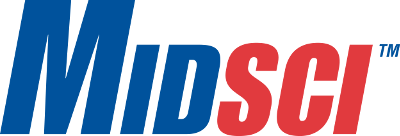 S2K Commerce - Products Dropdown
S2K Commerce - Products Dropdown
 S2K Commerce - Shopping Cart
S2K Commerce - Shopping Cart
 S2K Commerce - Order Entry
S2K Commerce - Order Entry
Western Lightning Plus (NEL103):
· Twice the sensitivity of standard products
· Direct protocol transfer
· ~ 1 picogram sensitivity
· > 2 hr signal duration for re-exposing film
· Working solution stability 8 hr at room temperature
· PVDF or Nitrocellulose membranes
· Non-toxic (no msds required)
Western Lightning Pro (NEL120)
· Mid-range sensitivity, with broad dynamic range
· Detection of less than 1 picogram amount of protein
· Long, stable signal > 12 hr for re-exposing film
· Stable at room temperature >1 year
· Working solution stable for > 24 hr at room temperature
· Non-toxic (no msds required)
Western Blot 2.0 with PURITY™
The PURITY™ detection system revolutionizes Western Blotting in
three steps.
Blocking buffer and secondary antibody are already components of the PURITY™ Reagent. And the washing buffer is also included. The only thing to add is your specific primary antibody.
Benefits:
- 1 simple protocol which makes almost all optimization unnecessary.
- Increased sensitivity and reproducibility of blots.
- Dramatically reduces the number of steps and time required for Western blots.
- Drastically decreases background phenomena.
- Highly reliable.
6X Loading Dye
- Used for agarose electrophoresis of DNA, RNA or nucleic acids
- Contains 3 tracking dyes and 15% Ficoll in a special Tris dye
- Light blue - around 4000bp in 1% agarose
- Indigo - around 600bp in 1% agarose
- Magenta - around 150bp in 1% agarose
- DNase/RNase/Protease free
IB01015
5X RNA Gel Loading Kit
- Reagents for denaturing and loading RNA samples onto a formaldehyde gel, using MOPS as a buffer
- RNA sample is dissolved in 10µl of DEPC water and mixed with 35µl of denaturing solution. Heat the sample to 65°C for 5 min. Once the solution has cooled, add 5µl of loading dye. The sample is now ready to load into the gel.
- DNase/RNase/Protease free
IB01190
2X Protein Loading Dye
- Tracks the migration progression of your sample during polyacrylamide electrophoresis
- Loading dye migrates independently of the samples, making it easier to estimate the migration of proteins
- DNase/RNase/Protease free
IB72120
Xylene Cyanol FF
- Used as a tracking dye at 5kb to monitor the progress of electrophoresis separation
- CAS Number: 2650-17-1
- DNase/RNase/Protease free
IB74040
Bromophenol Blue
- Tracking dye in electrophoretic separations
- Migrates around 0.5kb
- CAS Number: 115-39-9
- Purity: >98.0%
RunBlue SDS Running Buffer (NXB50500) a TEO-Tricine buffer system which provides a separation similar to the MOPS buffer used with BIS-TRIS precast gels. It provides enhanced separation of higher molecular weight proteins. The buffer can be for reduced and non-reduced samples.
RunBlue TGS Blot Buffer(NXB82600) has been specially formulated to provide optimal blot transfer of proteins from RunBlue Precast Gels. Supplied as a concentrate should be diluted by a factor of 10 for use with the RunBlue Dual Run and Blot system or a factor of 20 for use with other blotting methods.
